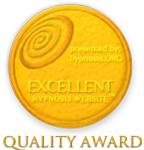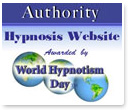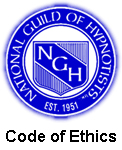
by Jack Elias
Hypnosis has been given many definitions over the years, and many authors have debated whether it even exists. These debates and definitions themselves are evidence of what I consider to be the most basic and profound form of hypnosis. My definition identifies the discursive thinking mind (what most of us identify with as our ordinary sense of self) as an ongoing hypnotic process. From this perspective, the ordinary conscious mind contains all the process elements of what traditionally have been called “trance phenomena.” And although the conscious mind approximates reality and makes its constructs seem workable, the mind itself is never accurately in touch with reality. More and more people are now beginning to subscribe to this view, as quantum physics continues to bear out scientific evidence that the nature of reality as described by spiritual masters throughout the ages is not merely metaphor, but actual truth. In fact, this approach to hypnosis could as appropriately be called “quantum hypnosis” as well as “transpersonal hypnosis.”
The transpersonal definition of hypnosis assumes that:
-
We are not who we “think” we are. Who we think we are is our deepest trance state (actually a “bundle” of trance states).
-
To the degree that our awareness is absorbed in and identified with our thoughts, we are in a hypnotic state – a defined state rather than a spontaneous, “real” state, an “awake” state.
-
All communication, both intrapersonal and interpersonal, to the degree that it is a sharing of thoughts about reality rather than a direct experience of reality, is a sharing of hypnotic states, “dream” states, even deluded states.
The Hypnotic Trance of Self
Not being who we think we are is the root of our dilemmas. (Or, more accurately, believing that we are who we think we are, and not noticing that we are not, is the root.) We are selectively attending* to our ideas about ourselves in order to make choices* which define and determine our lives. If the root idea of who we are is a mistake, then our whole accustomed process of strategizing to improve our lives is a “mishap” having varying degrees of painful and pleasurable consequences.
The most profound aspects of the hypnotic trance of self (or the bundle of trances of self) are established in childhood prior to our development of a discriminating perspective. As children, we accepted the overwhelming vividness and prestige, good and/or bad, of the stimuli and messages acting upon us as “truth.” Learning to identify our sensory functions and our bodily delineation happens quite naturally, but extending that to the healthy expression of our mind/body in interpersonal relationships is rare. The degree to which our first relationships were unhealthy, i.e. shaming, confusing, or threatening, determines how profoundly we develop the trance of false, hypnotic self. This trance of self refers to a fixed idea of a rigidly defined self, rather than the spontaneous sense of wellbeing of a self that flows on effortlessly through changes, one that does not need ideas to help it remember who it is. In other words, when you are fully involved in being who you are, you don’t waste time keeping track of who you are. It isn’t necessary to do this if there is no sense of shame or threat to ward off. And the de-hypnotized, free-flowing self – not perceiving anything as separate – is simply blissfully existent and awake, without a need to ward off anything that comes its way.
The hypnotic self is a powerful set of trance phenomena. Growing up from infancy to early adulthood means being in the cultural and familial hypnotist’s arena 24 hours a day! Everyone is hypnotizing you – telling you what everything means, telling you what you are, and what your actions mean regarding your worthiness – by delivering suggestions to you with repetition and emotional force.* Children learn by modeling; they are master mimics. Thus begins the process of self-hypnosis (or self-talk, if you like). Have you ever had the opportunity to eavesdrop on a young child playing with toys while he is repeating the judgments he has heard about himself in an innocent, singsong voice? We master these skills of hypnosis very early in life. In this way we quickly develop the veils of perception – we are no longer able to see a tree, hear a bird, taste a hamburger, or experience anything (including ourselves) simply and directly, without a running commentary going on inside. The stimulus of a tree, a bird, or a hamburger, or the spontaneous movement of our own mind, body or emotion, triggers an instantaneous, uninterrupted barrage of associations, judgments, and memories, filling our mind with sights, sounds, and sensations.
This onslaught of associated responses refers to the past and projects into the future with such speed and force that, not only do we not notice we have missed the experience of the tree (its mounds of soft leaves, its mottled trunk, its gnarled mass of roots sinking deep into the earth who knows how deeply) but we also don’t notice that we have been distracted from seeing the tree. We are anesthetized to the pain of our severed relationship to the tree.
How many of us are already habitually numbed to the pain of being disconnected from the natural world? Does it seem a strange notion that it could be painful not to really see and experience a tree that was right in our midst?
Distraction by association, forgetfulness, spontaneous anesthesia, positive hallucination (seeing something that isn’t there), negative hallucination (not seeing something that is there), time distortion and time displacement, spontaneous regression – all these are signs and qualities that traditionally indicate a deep state of hypnosis, And yet all of these take place in our ordinary waking consciousness.
We will examine the signs and qualities of hypnotic depth from the traditional standpoint, and then explore how they blend into what is usually considered the non-hypnotic or “conscious” state. In this way we will begin to understand why it has become so difficult for us simply to see a tree.
Therapeutic Hypnosis Defined
Conscious, subconscious, unconscious: these concepts pervade our culture, and we freely use them intalking about ourselves. To the degree that we do this without having contemplated the meaning of theseterms in the context of personal experience, or to the degree that we haven’t determined the usefulness oflabeling various kinds of experience with these terms, we really don’t know what we are talking about. Weare merely engaged in hypnotizing ourselves by the very familiar process of sloganeering.
For example, the political slogan, “America! Home of the free!” has no specific, universal meaning, but can trigger strong emotional responses of varying kinds depending on the audience. Likewise, a phrase such as, “I know this problem is in my subconscious but I can’t get at it,” gives a person a false sense of knowledge that is really a state of confusion (i.e., a hypnotic state). The idea itself creates the dilemma. Here’s one we all can identify with: “I know that intellectually, but I can’t stop…”. The phrase, “I know intellectually,” is one of the most common supports of ongoing trance. Its most important characteristic is that it short-circuits the possibility of accessing or maintaining an awake state of openness, while affording a bit of comfort in seemingly knowing something. What “I know intellectually” usually means is not that we know something at all. (Knowing it would meaning that it is alive within us, an actively available resource capable of facilitating change.) Rather, saying “I know it intellectually” indicates nothing more than our ability to pronounce the words, saying them over and over in our head like a lullaby, with little or no effect on our awareness.
I point this out in order to alert you, especially while you are a student, not to settle for this false kind of “learning.” It is what most of us are conditioned (hypnotized) to do. Bearing that in mind, here are a few of the definitions that successful, highly recognized hypnotists have applied to hypnosis:
“Hypnosis is the use of suggestion, whether direct or indirect, to induce a heightened
state of suggestibility in which there is bypass of the critical faculty of the mind, and selective attention to
suggestions given.”
–Dave Elman“Hypnosis is a state of awareness dominated by the subconscious mind.”
— Michael Preston, M.D.“Hypnosis is a ‘shrinking of the focus of attention.'”
— Milton Erickson
Can any useful sense be made of these statements? What is “the use of suggestion…to heighten suggestion”? What is “the bypass of the critical faculty”? And how can “a state of awareness” be “dominated by the subconscious mind”?
What are these expert hypnotists attempting to describe? Can you relate the terms they are using to your personal experience? First, it is helpful to recognize that such labeling, which we have all been trained (hypnotized) to do, dissociates us from the experience we are labeling and creates subtle and not-so-subtle limitations.
It is important to note the difference between labeling, which diminishes interest and awareness in ongoing phenomena, and descriptive activity, which keeps us engaged with the phenomena. When descriptive interest is reduced to labeling, something alive and vital is lost in the process. The ability to label is, nevertheless, valuable when used appropriately. Labeling is inappropriate in the learning process when it does no more than satisfy the urge to say, “I know that intellectually.” Because no sooner do we say it, than we have put ourselves into trance, and are living in the box created by our words.
We all do it. In fact, this tendency lies at the root of all our worldly difficulties, personal and political, social and cultural. For once we have created a label, a conceptual box we can hold onto, we will grasp it and defend it, even in the face of irrefutable evidence to the contrary. It is easy to observe this everyday phenomenon in the prejudices and politics of our times, but have you ever thought about some of your own problems from this point of view? Take a moment now to remember being in the grip of some personal limitation – one of those times when you acted and felt like a helpless two-year-old, despite the truth of your six-foot-two-hundred-pound-body-having-taken-care-of-yourself-daily-for-years experience.
That’s hypnosis!
The phenomena these men are trying to describe as hypnosis are marked by the same qualities that pervade our conscious functioning. There is no clear distinction between the two. Even the “critical faculty” is actually a trance conditioned function. From this perspective, it is not so important to create a neat label to apply to the phenomena, because that so easily leads to a lazy, and false, sense of knowledge.
It is more challenging, and more helpful to the client, to develop and access more resourceful trance states that expand the client’s awareness of choice and power – to the point that, ultimately, she comes into an awareness that is beyond trance states altogether.
Buddhism calls this the state of No-Mind. In all trance states, the thinking mind is busy labeling and defining reality, whereas the No-Mind state allows the direct perception of reality without conceptual mediation. (That’s a euphemism for “distortion and interference.”) No-Mind is a state in which the heart/mind and the head/mind functions merge, releasing one’s true, clear intelligence. The mark of this union is one’s reliance on the spontaneous guidance of intuition, direct perception and recognition of identity between subject and object. This intuition of identity engenders an unwavering sense of spaciousness, luminosity, and love. It manifests in a person as the revived capacity to be moved by the beauty of a flower, to see the focus, love, and attention of the whole universe in the movement of a fly’s wings, and to care for the life of all beings as one’s own life.
I define therapeutic hypnosis as taking hold of the mental functions we use every day to contract our focus and numb our sense of being (or to maintain the status quo of an already acceptable contracted state) and using those same functions to expand our awareness of being organically alive. Therapeutic hypnosis releases this mental contraction, the nature of which is fear, into an expansiveness, the nature of which is love. As with natural medicine, we distill the very poison that causes an illness in such a way that we produce its antidote.
Using this as our working definition of hypnosis, there is no real or solid boundary between the conscious and the unconscious to get in the way. No borderline exists to stop our own mental processes, skillfully used, from destroying the hypnotic state that keeps us boxed up in the world of our words, that prevents us from truly seeing the tree. If one understands this definition of therapeutic hypnosis, not as a label, but as a phenomenon being displayed by the mind, it becomes very delightful to do hypnosis.
We do not have to be concerned about who can be hypnotized and who cannot be hypnotized. We need only develop the sensory acuity to notice how each person does it to themselves, how we do it to ourselves, and then make the kinds of adjustments that this course intends to teach.
To do this kind of work, we as hypnotists must place primary emphasis on our own daily practice. We must cultivate greater and greater awareness of our own habitual states, of when these states are triggered and what triggers them. And we must notice these states in ourselves with a growing capacity for spacious, kind-hearted acceptance of their presence. Our daily practice must include some form of bodymind coordination through physical activity. It must also include a meditation or contemplation practice, to develop the capacity to detach from the hypnotic turmoil of subconscious thoughts and feelings – the constant “internal gossip” that we all generally accept as a given and therefore rarely challenge in ourselves.
©Copyright Jack Elias, 2006, All Rights Reserved. Excerpt from Finding True Magic: Transpersonal Hypnosis/NLP by Jack Elias.






